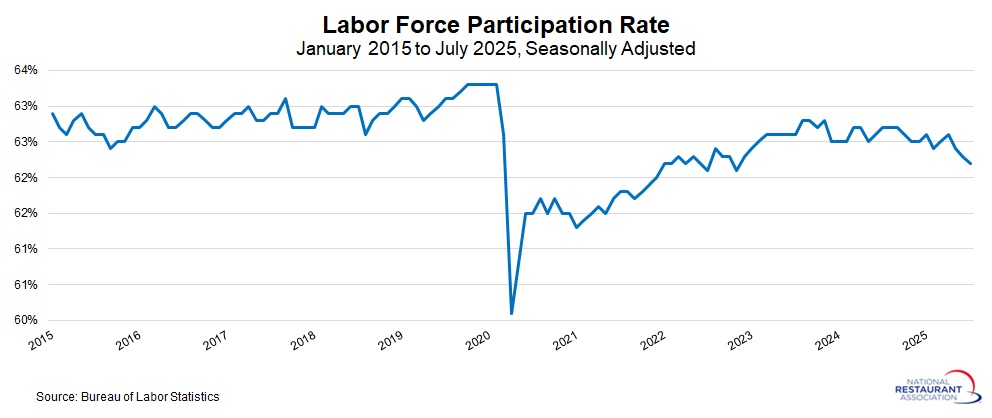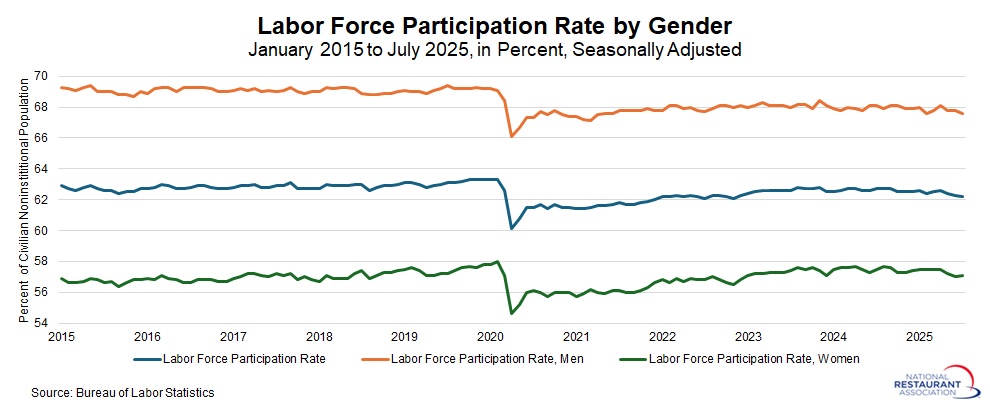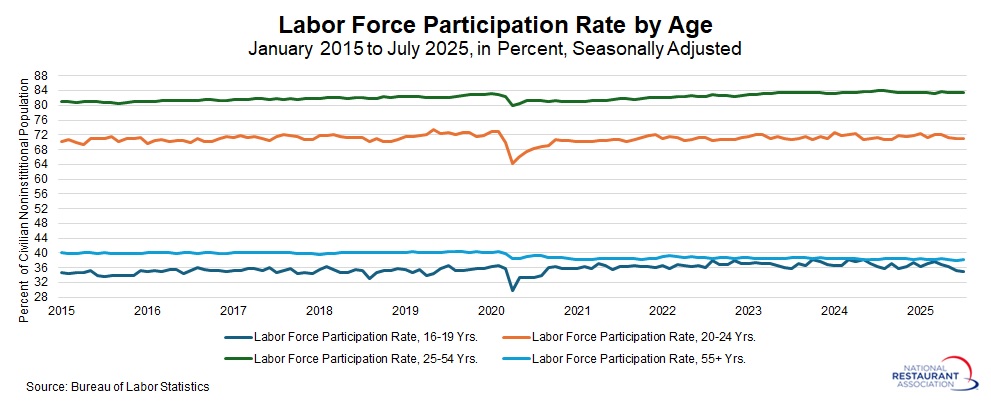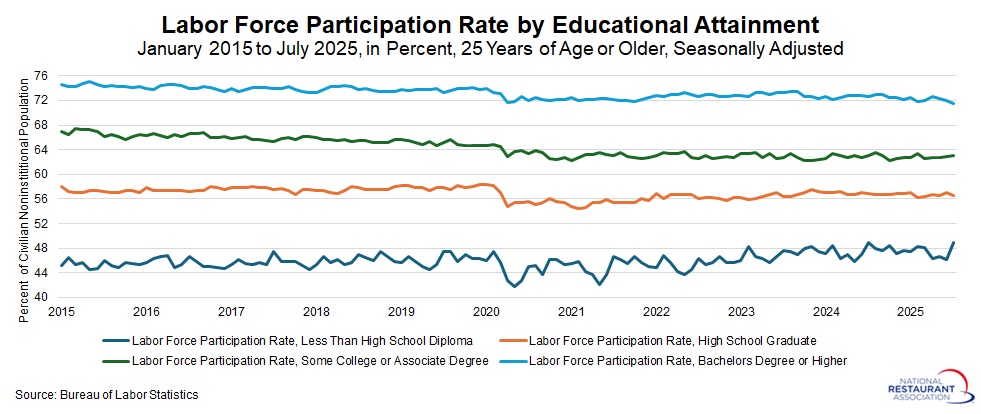Research
August 21, 2025
Increasingly on the Sidelines: Labor Force Participation Continues to Slide
In November 2023, the labor force participation rate reached 62.8%, the third time in four months it hit that mark. Those readings were the strongest since February 2020, signaling that more people were re-entering the workforce and helping ease labor shortages. This was welcome news for restaurants and other businesses who were desperately trying to recruit and retain employees, and a stronger labor market helped to provide increased resilience for the U.S. economy.
Since then, however, more potential workers have stepped back, moving to the sidelines of the labor market. The participation rate slipped to 62.2% in July, its third consecutive monthly decline and the lowest level since November 2022.
By gender, labor force participation has declined for both men and women over the past year or so, but with a faster pace of decline for males. Among men, the rate peaked at 68.4% in November 2023—the highest since March 2020—before slipping to 67.6% in July, matching February’s level and marking a roughly four-year low. For women, participation peaked at 57.7% in both April and August 2024 but eased to 57.0% in June and 57.1% in July.
For workers 55 and older, demographic factors are key, with more individuals retiring, particularly since the pandemic. In February 2020, participation for this group was 40.3%, near the record high of 40.7% set in late 2012 and early 2013. That share dropped to 38.0% in June, the lowest since January 2007, before edging up to 38.1% in July.
By contrast, participation among “prime-age” workers (25–54) has held relatively steady, averaging 83.5% over the past 30 months and registering 83.4% in July. It hit an all-time high of 83.9% in July and August 2024. While the current rate remains close to that peak, even this group has experienced some slippage over the past year.

These findings reinforce a post-pandemic trend: young men remain the most likely to be on the sidelines of the labor force. This underscores the need for policymakers and businesses to find ways to draw more of them back into the labor market—efforts that could help ease workforce shortages by expanding the overall labor supply.
Perhaps more surprising, however, is the impact on individuals with at least a bachelor’s degree. Labor force participation among the most educated slipped to 71.5% in July, down from 72.0% in June and marking a record low in data going back to 1992. (It briefly fell to 71.6% in April 2020 in the immediate aftermath of the pandemic.) Just 13 months ago, the rate was 73.0%. This suggests a current labor market that has become more challenging.

Since then, however, more potential workers have stepped back, moving to the sidelines of the labor market. The participation rate slipped to 62.2% in July, its third consecutive monthly decline and the lowest level since November 2022.

By gender, labor force participation has declined for both men and women over the past year or so, but with a faster pace of decline for males. Among men, the rate peaked at 68.4% in November 2023—the highest since March 2020—before slipping to 67.6% in July, matching February’s level and marking a roughly four-year low. For women, participation peaked at 57.7% in both April and August 2024 but eased to 57.0% in June and 57.1% in July.

By contrast, participation among “prime-age” workers (25–54) has held relatively steady, averaging 83.5% over the past 30 months and registering 83.4% in July. It hit an all-time high of 83.9% in July and August 2024. While the current rate remains close to that peak, even this group has experienced some slippage over the past year.

These findings reinforce a post-pandemic trend: young men remain the most likely to be on the sidelines of the labor force. This underscores the need for policymakers and businesses to find ways to draw more of them back into the labor market—efforts that could help ease workforce shortages by expanding the overall labor supply.
Perhaps more surprising, however, is the impact on individuals with at least a bachelor’s degree. Labor force participation among the most educated slipped to 71.5% in July, down from 72.0% in June and marking a record low in data going back to 1992. (It briefly fell to 71.6% in April 2020 in the immediate aftermath of the pandemic.) Just 13 months ago, the rate was 73.0%. This suggests a current labor market that has become more challenging.
